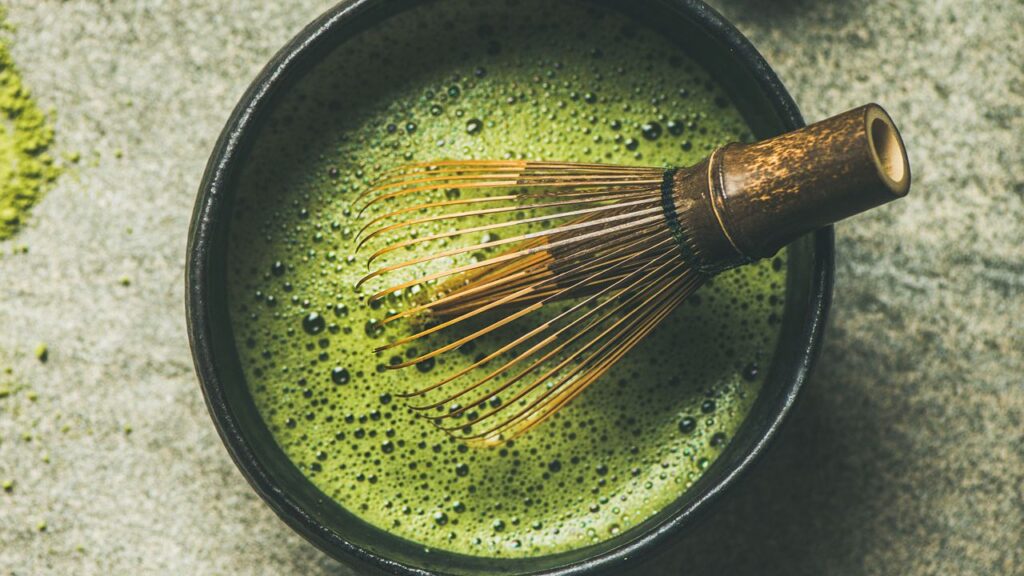The Rise of Matcha: A Trendy Transformation
In recent years, matcha has captivated the hearts and taste buds of many, especially within the social media scene, earning the nickname “Gen Z green juice.” This vibrant green powder, often featured in aesthetically pleasing posts, has seen a staggering 202% increase in sales in the UK alone. As a dedicated tea enthusiast, it’s exhilarating to witness tea’s resurgence as a preferred beverage. What makes matcha unique is its ability to provide an experience that coffee simply cannot. From the delightful ritual of whisking the powder to achieve that perfect foamy texture to its soothing, gentle taste, matcha offers a calming alternative amid a fast-paced lifestyle.
However, like many trends, the world of wellness often comes with its own set of myths and misunderstandings. I found myself taken aback after a friend’s comment about matcha potentially interfering with iron absorption—which triggered a reminder of my past struggles with iron deficiency. As someone who has been pescatarian since childhood, I’ve always known the importance of maintaining proper nutrient levels without resorting to daily supplements. To help shed light on this topic, I turned to nutritional therapist Farzanah Nasser for detailed insights.
To understand matcha better, Nasser explained that this green powder originates from the Camellia sinensis plant, with its vibrant color coming from a unique growing process. The tea leaves are cultivated in the shade, enhancing their chlorophyll content, which translates to higher levels of nutrients and a richer flavor profile. This method not only makes the drink visually appealing but also enhances its health benefits, making matcha a delightful choice for those looking for nutritious alternatives to coffee.
Matcha is packed with polyphenols—plant compounds known for their anti-inflammatory properties. Nasser specifically noted epigallocatechin gallate (EGCG), a powerful polyphenol that contributes to calming effects on the nervous system. Unlike coffee, which can often induce jitters or anxiety due to its caffeine content, matcha users typically experience more stable energy levels. Furthermore, the benefits of drinking matcha extend beyond relaxation; it is also associated with improved mood, cognitive function, and decreased cholesterol levels.
One of the key questions regarding matcha is how often it should be consumed. Nasser suggested that one cup of matcha is roughly equivalent to three cups of green tea. While matcha can be a beneficial addition to a balanced diet, moderation is key. The concern about iron absorption is valid; matcha’s tannins can bind to non-heme iron from plant sources, potentially interfering with its absorption. However, Nasser reassured those concerned about iron deficiency that they need not avoid matcha. Instead, pairing matcha with vitamin C-rich foods can enhance iron absorption, allowing individuals to enjoy their favorite drink without compromising on their nutritional health.
Nasser also mentioned that incorporating matcha into other food items is perfectly acceptable. A daily dose of matcha can be enjoyed in various ways—from being mixed into yogurt bowls to adding a unique flavor to muffins and smoothies. The versatility of matcha makes it easier to integrate into one’s diet while remaining aware of potential limitations regarding its caffeine content. Balance is crucial; while matcha is healthy, overconsumption can lead to negative side effects like impaired sleep quality or heightened anxiety.
In sum, matcha’s popularity as a refreshing drink goes well beyond social media trends. With its roots in wellness and nourishment, matcha not only embodies a fun preparation process but delivers an array of health benefits. By understanding its effects on iron absorption and incorporating it responsibly into a balanced diet, fans of this “green juice” can savor their matcha without worry. As we embrace this vibrant beverage, it’s important to take thoughtful steps that harmonize enjoyment with health—ultimately making every sip a pleasant experience.

